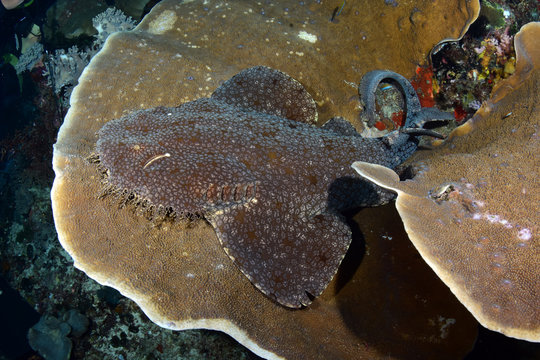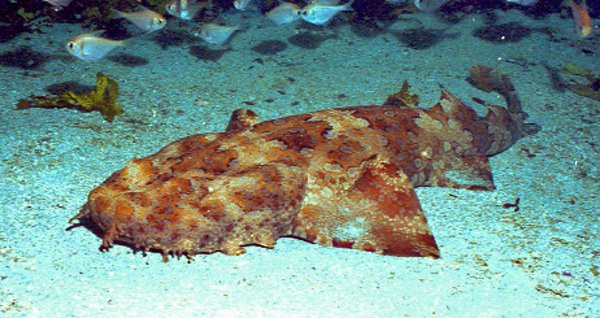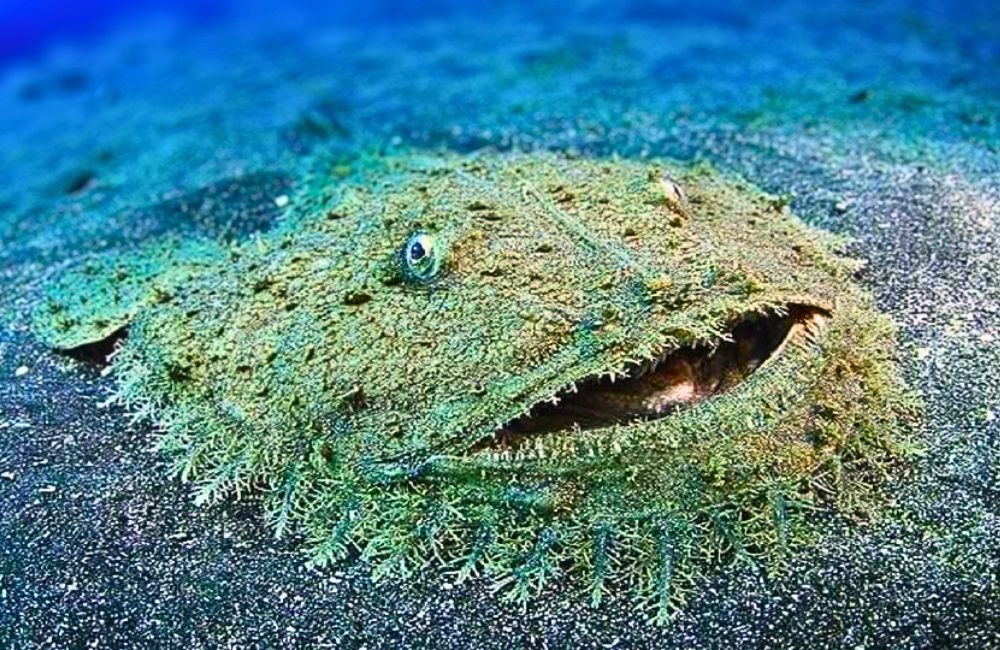When it comes to unique wildlife in the ocean, few creatures are as fascinating—or as easy to overlook—as the carpet shark. Blending seamlessly into the seafloor like a living rug, this extraordinary animal is a reminder of how much mystery and beauty still thrives in nature.
What is a Carpet Shark?
The term “carpet shark” refers to a family of sharks called Orectolobidae, with the tasseled wobbegong (Eucrossorhinus dasypogon) being one of the most remarkable members. Sometimes called a “walking carpet,” this shark’s appearance is so odd that many people mistake it for a patch of seaweed or coral. But look closer, and you’ll see a cunning predator—and a true master of camouflage.
Carpet sharks inhabit the shallow coral reefs off northern Australia, New Guinea, and nearby islands. Their fringed, flattened bodies are covered in branched lobes and complex markings, which allow them to completely vanish against the colorful backdrop of the reef.

A Closer Look at Nature’s Camouflage
One of the most interesting things about the carpet shark is its shape. Unlike the classic image of a shark with a sleek, torpedo-like body, carpet sharks are broad, flat, and decorated with elaborate “tassels” around their heads. These lacy flaps help them hide from both predators and prey.
During the day, these animals are often found curled up under ledges or tucked away in caves, perfectly still and nearly invisible. But don’t be fooled—when night falls, the carpet shark wakes up and goes hunting, actively searching for fish and crustaceans to eat.
Their ability to disappear is so effective that they can sometimes be stepped on by unsuspecting divers or swimmers. That’s why experts strongly advise: don’t step on the carpet shark!

Read Full Story:
Man Loses 360 Pounds Naturally – Internet Rallies to Support His Next Step
The Predator Beneath Your Feet
Despite their lazy look, carpet sharks are formidable hunters. They are ambush predators, waiting patiently for hours as smaller animals approach. When prey is close enough, the carpet shark snaps it up with lightning speed using its enormous mouth.
Some carpet sharks have been observed swallowing prey nearly as large as themselves, like the famous case of a 1.3 meter shark eating a 1-meter long bamboo shark. They even use their tails to lure fish by waving them like bait, drawing in curious victims.
It’s not just smaller fish that need to be wary. There are records of carpet sharks biting humans, usually because someone accidentally disturbs them. While they don’t usually attack without provocation, their powerful jaws and sharp teeth mean they can inflict serious wounds if threatened.
Why Are Carpet Sharks Important to Nature?
These sharks are a vital part of the reef ecosystem. As predators, they help control fish populations and keep the reef healthy. Their incredible camouflage also makes them a favorite subject for underwater photographers and nature lovers.
Sadly, the places where carpet sharks live are shrinking. Wildlife researchers report that fishing, coral destruction, and pollution are reducing the available habitat for these animals. Some areas where carpet sharks were once common are now nearly empty.
Protecting carpet sharks means protecting the reefs and all the animals that depend on them. Conservation efforts focus on safeguarding their natural homes and reducing the human impact on these delicate environments.
Also Read:
Tammy Hembrow’s Bikini Photos Are Stirring Controversy – Here’s Why Everyone’s Talking
The Role of Rescue and Ecotourism
In some places, carpet sharks have become stars of wildlife rescue and ecotourism programs. Divers and tourists travel from around the world to see these unusual sharks in their natural setting. Responsible diving helps support local economies while raising awareness about the need to protect fragile marine ecosystems.
However, experts warn that it’s important not to harass or disturb these animals. Their cryptic appearance makes them easy to accidentally step on, which is dangerous for both the human and the shark. Always look where you’re walking or diving, and remember that the best nature experiences come from observing animals in peace.
Interesting Facts About Carpet Sharks
-
Not all sharks are fierce predators. The carpet shark is a slow, patient ambush hunter that relies on camouflage, not speed.
-
They can live for years in the same small area, returning to favorite hiding spots again and again.
-
Their coloring isn’t just for looks: It’s essential for survival, allowing them to avoid predators and sneak up on prey.
-
They have been observed using “active luring,” waving their tails to attract curious fish closer before striking.
-
Carpet sharks are not dangerous unless disturbed. Most incidents with people happen when the shark is stepped on or feels threatened.
Why We Must Protect the Carpet Shark
The carpet shark is a symbol of nature’s creativity and the complexity of life in the ocean. But without proper protection, their populations will continue to decline. Every piece of trash left on a reef, every coral removed, and every unregulated fishing trip takes a toll.
By supporting wildlife rescue groups and marine conservation, we help ensure that carpet sharks and countless other ocean animals will survive for future generations to discover and enjoy.
Final Thoughts
The carpet shark is a hidden gem of the underwater world—a reminder that sometimes, the most extraordinary creatures are the ones hiding right beneath our feet. The next time you’re exploring a coral reef, remember to tread carefully. What looks like a patch of seaweed might just be one of nature’s most clever and elusive animals.
If you love stories about rare creatures, unexpected rescues, and the power of nature, be sure to check out more amazing content from our team. Every share, every like, and every new supporter helps us continue the fight for wildlife protection and awareness.


